Jews against apartheid
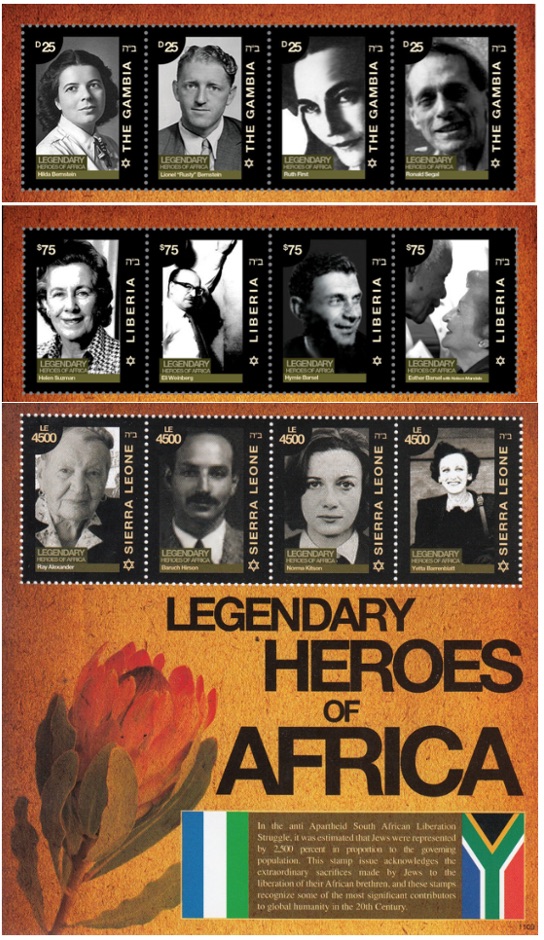
JVL Introduction
On 1st March 2011 the postal services of Liberia, Gambia and Sierra Leone simultaneously issued a set of three commemorative postal sheets in memory of twelve South African Jews who fought Apartheid.
The stamps came out thanks to the efforts of Grant Gochin, a Jewish South African-born, Los Angeles-based money manager. Seven of the twelve activists Gochin chose to honour were women and eight were Communists, while at least half the names are likely to be new to most British opponents of apartheid.
It would be fascinating to know how the three African governments were persuaded to participate in the project and how selection of those commemorated on the stamps was made. Probably only its originator can tell us and we hope Gochin will share that story one day.
In he meantime, we have this wonderful postal tribute to South African Jewish anti-apartheid activists.
Reproduced below is Jonah Lowenfeld’s contemporary article, containing detail about those appearing on the stamps as well as more overarching information about Jewish involvement in South Africa’s internal anti-apartheid struggles.
“The Voice of International Lithuania” website adds further information, reposted below.
[31 August 2021: this intro was rewritten in the light of information received.]
This article was originally published by Jewish Journal on Wed 13 Apr 2011. Read the original here.
African stamps honor Jews who fought apartheid
Every year, Jews around the world tell the story of the Israelites’ liberation from slavery in roughly the same way. And every year, familiar props help bring that story to life.
This Passover, two local Jews — a businessman and an eminent rabbi — are hoping to introduce to the seder a rarely told story about Jews who fought for freedom, bringing to the table a new object that could sit comfortably alongside the bitter herbs, matzah and charoset.
The new visual aid is three sheets of commemorative stamps, which tell the story of the many South African Jews who worked to bring an end to apartheid. The stamps, issued recently by three small West African countries, honor 12 brave Jewish activists, thanks to the efforts of Grant Gochin, a South African-born, Los Angeles-based money manager, who also serves as the Honorary Consul of Togo.
From the earliest days of the ruthless regime that denied South Africans the basic rights of citizenship, Jews were disproportionately found on the front lines of the internal resistance movement. The “Legendary Heroes of Africa” stamps were jointly released on March 1 by the postal authorities of The Gambia, Liberia and Sierra Leone.
Each country authorized a single sheet of four unique stamps, of which fewer than 100,000 copies were printed. Each stamp includes one individual’s name and picture, along with a Star of David and two Hebrew letters, bet and hay, the traditional inscription included on printed matter that serves as a nod to the divine assistance that helps projects come to fruition.
Gochin, who was himself involved in the anti-apartheid movement, worked for a full year to realize his idea, and when he showed the stamps to Rabbi Ed Feinstein of Valley Beth Shalom, the rabbi saw a story that could complement the traditional narrative of the Israelite slaves being freed from bondage in Egypt.
“Here you have contemporary heroes who really did effect an exodus,” Feinstein said, “who really did bring light out of darkness, and life out of death.”
The individuals on the “Heroes” stamps are not household names. Feinstein said he knew of Ruth First, a prominent South African journalist whose anti-apartheid activism landed her in jail, then in exile and ultimately led to her being killed by a letter bomb in 1982. He had also met Helen Suzman, who for years was the lone voice speaking out against apartheid in South Africa’s parliament; she was nominated twice for the Nobel Prize and is “the best-known out of all of them,” Gochin said. “There was no way not to issue a stamp for her.”
At a time when Israel is regularly accused of being an apartheid state, Gochin wants to remind people of the true origins of the word.
“There is zero comparison between apartheid and what happens in Israel,” Gochin said. “It is an absolutely outrageous falsehood that is demeaning to the victims of apartheid and to anybody that stood against apartheid, to compare the rights that everybody enjoys in Israel to the way people were victimized in South Africa.”
That intention may explain why a few prominent Jewish South African anti-apartheid activists are absent from the “Heroes” series. Two politicians, Ronnie Kasrils and the late Joe Slovo — both as well known as anti-Zionists as for their anti-apartheid activism — are not among the 12 featured on the stamps.
Other than First (who was married to Slovo) and Suzman, the 10 others on the stamps have received far less acclaim. “All of these people were just so ordinary and so unpretentious, down to earth and not looking for accolades,” Gochin said. “Their legacy is being forgotten, and we can’t allow that.”
Their stories all can be found on the Web site legendaryheroesofafrica.com [long defunct – JVL ed] — along with those of Gochin’s aunt and uncle, Esther and Hymie Barsel.

Legendary Heroes of Africa stamp sheet from Gambia featuring, from left, Hilda Bernstein, Lionel “Rusty” Bernstein, Ruth First, Ronald Segal.
Gochin’s cousin, Sunny Lubner, who now lives in Fort Myers, Fla., remembers her parents not just as leaders in the anti-apartheid movement, but as strong supporters of equality across the board. “They decided early on that they did not want to live in a society that frowned on blacks, Jews, communists, gays — everything,” Lubner said. “They were really ahead of their time in all of those issues.”
Like most South African Jews, the Barsels were both of Lithuanian descent, or Litvaks. Esther was born in Lithuania; Hymie was the son of two immigrants from that region.
“These were people coming to South Africa having experienced intense hatred against them,” Gochin said of South Africa’s Litvak Jews, many of whom arrived in the years that followed the 1915 expulsion of Jews from Lithuania. “And they got to South Africa,” Gochin said, “and they saw hatred against black people.”
Some Jews were reluctant to speak out, fearing they might make themselves unwelcome in their new haven. “At the same time,” Gochin said, “there was this other side that said, ‘How can you possibly stand by and see being done to other people what was done to us?’ You have to stand up.”
Jews made up just 2 percent of the white population of apartheid-era South Africa, but they constituted at least half of the country’s white anti-apartheid activists, Gochin said.
Signing up for the fight against apartheid was an easy way to make life in South Africa very difficult. “We always knew that our house was under surveillance,” Lubner said. “We always knew that our phone was tapped.”
Lubner was 8 years old in 1956 when her father was accused of treason, along with 155 other eminent anti-apartheid activists. “South Africa was such a police state at that point that people were afraid of being associated with us,” Lubner said. “Very few of our relatives would have anything to do with us.”
Hymie Barsel was held for three years before the apartheid-era government dropped the treason charges. While in jail, he was brutally tortured. “They were very clever,” Lubner said of her father’s captors. “They would inflict damage on the spleen, which apparently is very difficult to detect.”
Esther Barsel, who was not tried in 1956, went to prison for her part in the anti-apartheid struggle in 1964. She spent four years in jail, followed by five years of house arrest. She had to get police permission to attend her daughter’s wedding in 1968. Lubner got married in a Johannesburg synagogue 10 minutes from her childhood home. “She [Esther Barsel] had to be home by 10 o’clock that night,” Lubner recalled.
Hymie Barsel died in 1987 without seeing the fruits of his activism. Esther Barsel, however, lived to see the end of the apartheid system, which began to be dismantled in 1990. South Africa has since honored her memory in various ways — the cell where she was incarcerated has been turned into a memorial installation, and when she died in 2008, Nelson Mandela publicly mourned her passing.
See also
Legendary Litvak heroes of Africa
The Voice of International Lithuania, consulted 11 August 2021
…This stamp issue acknowledges the extraordinary sacrifices made by Jews to the liberation of their African brethren, and these stamps recognize some of the most significant contributors to global humanity.
Helen Suzman (nee Gavronsky) was born in the South African mining town of Germiston on 7 November 1917 to Samuel and Frieda Gavronsky, both immigrants from Lithuania who had come to South Africa to escape the restrictions imposed on Jews.
Read more [the read more links have long expired, s you will find out if you click on this one – we’ve removed the others!
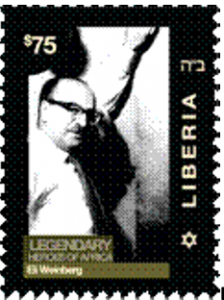 Eli Weinberg
Eli Weinberg
Eli Weinberg was born in 1908 in the port of Libau, in Latvia on the Baltic Sea. He experienced the First World War and the October Revolution of 1917 as a child, and this led to his socialist political development. During World War I, he was separated from his family.
Esther Barsel (born October 17, 1924, in Raguva, Lithuania; died October 6, 2008, in Johannesburg) was a South African politician and long-standing member of the South African Communist Party (SACP). She was a member of both her local African National Congress branch and the SACP’s Johannesburg Central Branch..
Hymie Barsel was born on September 11, 1920 in Fordsburg, Johannesburg, South Africa to Faiga and Moishe Barsel, both of Litvak heritage. He was raised in a Zionist oriented home. He suffered from epilepsy which was ill understood at that time, eventually receiving treatment from Dr. Max Joffe, also a Zionist.
SIERRA LEONE
Yetta Barenblatt was born on 24 September 1913, in Dublin, Ireland, to Basna and Solomon Malamed of Lithuanian origin. In 1925, a friend encouraged her to come to South Africa with the promise of employment. However, due to her circumstances, further education was not possible and Barenblatt was forced to seek employment at a retail store.
Ray Alexander Simons née Alexandrowich was born on 12 January 1913 in Latvia. While at school, she displayed little fear in challenging authorities. Her independent thinking suggested she pursue a career in medicine but she soon took up politics. When she was about 13, she became active in the underground Latvian Communist Party.
Baruch Hirson, named after his late grandfather, was born on 10 December 1921 at Doomfontein near Johannesburg in the Transvaal. His father was an electrician. His parents, Joseph and Lily Hirson, were Jews who had immigrated to South Africa to evade the pogroms, persecution and discrimination Jews were subjected to in the old Romanov Empire.
Norma Kitson was one of a generation of Jewish activists, who committed themselves to the struggle against racial tyranny in South Africa. The drive of these South African Jews was to give witness against racism and social injustice, even at great personal cost. Norma Kitson’s autobiography, Where Sixpence Lives (1986), uniquely fuses the personal and the political.
GAMBIA
Ruth First was born on May 4, 1925 to Jewish immigrants Julius and Matilda First. Julius, a furniture manufacturer, was born in Latvia and came to South Africa in 1906. He and his wife were founder members of the Communist Party of South Africa (CPSA) or South African Communist Party (SACP) in 1921 . Ruth and her brother, Ronald, grew up in a household in which intense political debate between people of all races and classes was always present.
Hilda Bernstein was born in London in 1915. Her father was Simeon Schwartz from Odessa, Ukraine. He relocated to England in 1901 where he became a Bolshevik and represented the new USSR in UK for a short while in 1920’s. He returned to the USSR when recalled in 1925, and died in the 1930’s without ever having returned to the UK.
Lionel “Rusty” Bernstein was born in Durban, in 1920; the youngest of four children of European émigrés. Orphaned at eight years old, he was raised by relatives. These early disruptions to his family life were compounded when he was sent to finish his education at a boys’ boarding school. Hilton College, a private school, that was the South African equivalent of Eton or Harrow.
At an early age, Ronald Segal proclaimed himself a Socialist, saying he did not want to be a millionaire. But he had no choice. His father was a co-owner of Ackerman’s, a giant cheap clothing chain in South Africa. At their home on the slopes of Cape Town’s Lion’s Head, his Zionist parents entertained visiting dignitaries. At age eight, Ronald read “Gone With the Wind” and a biography of Disraeli.
© Legendary Heroes of Africa
Stamps may be purchased at: www.CyberStamps.com.
www.LegedaryHeroesofAfrica.com is not affiliated with www.CyberStamps.com. The above link is provided as a servise to our visitors.
JVL adds: The links no longer work. Stamps are available on ebay here (as of 11 August 2021) Your web editor has a set!
Jews in South Africa (continuation of the above post)
Some background/facts:
- Nelson Mandela in his “Long Walk to Freedom” wrote, “I have found Jews to be more broadminded than most whites on issues of race and politics, perhaps because they themselves have historically been victims of prejudice”. It was a firm of Jewish lawyers Witkin, Sidelsky and Eidelman that challenged Apartheid by engaging Mandela as an articled clerk, thus giving him the rare chance for a Black man to become a lawyer. While studying law he became friends with fellow students and future anti-Apartheid political activists Joe Slovo, Harry Schwarz and Ruth First.
- Jews comprised only about 2% of the White (ruling) population and 0.6% of the total population, South African Jews should take tremendous pride in the very high proportion that opposed Apartheid in multiple fashions. Of the 150 charged in the 1956 Treason Trial of Anti-Apartheid activists, 23 were whites and of the 23 whites, at least 14 were clearly identifiable Jews (well over 50%). Advocate Isie Maisels won acclaim for his leadership of the defense team which achieved acquittal of all the accused in the Treason Trial. As a committed Jew, Maisels had served as President of the Federation of Synagogues, as well as on the Executives of the Jewish Board of Deputies and the South African Zionist Federation. The 1963 Rivonia Trial resulted from the ANC having secretly established underground headquarters where the military arm of the ANC Umkhonto we Sizwe (The Spear of the Nation) was conceived. The premises at Lilliesleaf Farm were acquired by Arthur Goldreich who had served as a volunteer in the nascent Israel army in 1948. Nelson Mandela stayed at the farm in the guise of a farm worker. Significantly, all the whites arrested in this epoch-making event were Jewish: Arthur Goldreich, Rusty Bernstein, Dennis Goldberg, Bob Hepple, and Dr Hilliard Festenstein. Goldreich now lives in Israel
- It is doubtful that any other group can boast anything approaching the proportionate number of Jews who took part in the struggle against Apartheid. The South African Muslim community comprised 1.1% of the total population compared with Jews 0.6%. The number of Muslims known to have actively opposed Apartheid is minimal and in fact they were reported to have cooperated with the Apartheid government. While Afrikaans newspapers frequently accused the Jews of subverting the Apartheid Regime, pointing to the high percentage of Jews among the whites detained by the police, the Afrikaans newspaper Die Burger in a two-part series, praised the Muslim community for its cooperation. It said: “Moderate Muslim theologians (geestelikes) in the Peninsula are of the opinion that not even civil disobedience is permissible for the Muslim minority in South Africa where they are to obey the law and are under obligation to negotiate if they consider the political system to be unjust or oppressive.”
- The secretary general of the African National Congress Kgalema Motlanthe in his address to the 42nd Biennial Conference of the South African Jewish Board of Deputies in Gauteng on October 19, 2002 said “That people of Jewish descent should be so prominent in the liberation movement says something fundamental about the compassion of Judaism”. Many Jewish immigrants who arrived in our shores in abject poverty, laying claim to little but their rich commitment to humanitarian and egalitarian ideals. These commitments were sometimes rooted in traditional Jewish teaching. They sometimes emerged from traditions of socialism. Whatever the case, Jewish compassion is the fruit of empathy, rather than sympathy. It is the fruit of struggle over many millennia, against racism and persecution”.
- Jewish influence towards racial equality in South Africa dates back to the earliest days of Jewish immigration. As far back as 1917 a Yiddish-speaking branch of the International Socialist League was formed. This league, a forerunner of the South African Communist Party (SACP) organized unions and co-operatives without distinction of class or color, eventually being absorbed into existing unions. Another typical example of the early days was the Garment Workers Union (GWU) a militant and multiracial trade union led by its general secretary, Solly Sachs from 1935 to 1948. White unions and the government fiercely opposed the GWU.
Mr. Motalanthe (mentioned in 4 above) said of Joe Slovo
“he was proud to acknowledge the Jewish roots of his compassion. Brought up as a child in a Lithuanian ghetto, he experienced at first hand the degradation and misery of being unfairly treated for no proper reason. So in the South Africa he grew to love, he determined that no one should be singled out for unfair treatment for no proper reason.
The disproportionate representation Jews amongst the minority of whites that chose to cast their lot in with the oppressed did not go unnoticed by the racist regime and there were consequences for the Jewish population by the racist regime.
In the few comments that followed publication, there was this interesting exchange abuot the role of Jews and Muslims in the struggle:
Eugene Rangayah · 467 weeks ago
I am not sure about the source of the information entitled Jews in South Africa. Especially with regards to point 3, which clearly, in my opinion, is aimed at marginalising the involvement of Muslims in the anti-apartheid struggle. The comparison made is with regards to the Muslim population in the Cape region. One would have to understand which race group makes up that population in order to understand their perspective. That region’s Muslim population is made up of the “Coloured/Mixed Race” or “Cape Malay” race group. This race group has had an association with the Afrikaaners, which goes back centuries! In point of fact, most of the Coloured people who I have encountered, often associate themselves with their Afrikaaner heritage(from a race perspective) rather than their African heritage. At times referring to themselves as Akrikaaners, based on Afrikaans being the first language.
In order for one to gain a full perspective on the Muslim involvement in the anti-apartheid struggle you would need to consider other race groups as well. In the Indian community in South Africa, over 80% of the anti-apartheid activists were Muslims. Look up the following people: Ismail Kathrada, Ismail Meer, Fathima Meer, Ahmed Kathrada, Yusuf Dadoo, Yusuf Cachalia, I could go on listing names.
At the end of the day, what is more important, is that people regardless of religion or race, took the initiative to join the struggle to oppose Apartheid.
and
Further to my comment above, one also has to acknowledge that Jews were regarded as White in Apartheid South Africa and enjoyed the benefits afforded to them as White South Africans. Some chose to oppose it, who have been duly honoured, and some chose to ride the wave of these benefits.
Grant · 467 weeks ago
Correct – Jews were regarded as white in South Africa and did enjoy all the privileges. What made their sacrifices even more remarkable was that they put themselves at risk and all the privileges at risk to fight a fight where they were not victims themselves.
The “Coloreds” and Indians were a disadvantaged community, so they were fighting for themselves with self interest at stake.
What made Jewish sacrifice so remarkable was that they had nothing to gain, and everything to lose, and still they participated at 25 times their proportion to the white community. Remarkable! If they had fought at a rate of twice their proportion to the population, that would have been remarkable by itself, but 25 times. Wow!
Eugene Rangayah · 467 weeks ago
I appreciate that White South Africans, who chose to join the struggle had everything to lose. That is not what I dispute about the article. The article, in my opinion, does a direct comparison between Muslim and Jewish participation in the anti-apartheid movement, resulting in the Muslim involvement being marginalised. Why does it not measure Hindu, Buddhist or Christian involvement? I do not think that this forum, should be used as an instrument to spruce up anyone’s involvement in the anti-apartheid movement at the expense of others. If the intention was to highlight the contribution of the Jewish community, then that’s fine, as it is the Litvak forum, but definitely not at the expense of the Muslims or any other religious sect.


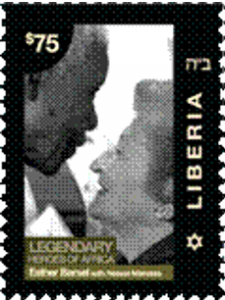


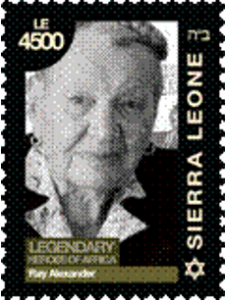

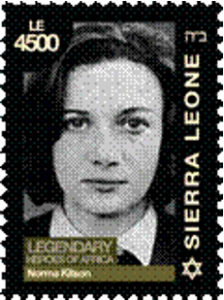

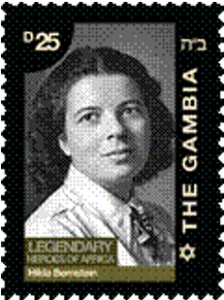


These comrades, like the fighters of the International Brigades, are our heroes and should be revered for all time.
What a wonderful story. Thank you for unearthing it. The exclusion of Joe Slovo and Ronnie Kasrils is telling.
The choice of people to commemorate looks rather arbitrary. It includes one of the white Rivonia Trial defendants – Rusty Bernstein – but none of the others, that is, Denis Goldberg, Arthur Goldreich, Harold Wolpe, James Kantor and Bob Hepple. Of these, Goldreich and Wolpe escaped from prison before the trial, James Kantor was let out (he was the decent but totally apolitical brother in law of activist Wolpe, who was only arrested as revenge for Wolpe’s escape) and Hepple was also released, whereupon he jumped bail and fled the country. This left only Goldberg and Bernstein as the white defendants who actually stood trial. And of the two of them, only Goldberg was jailed (for life, but served twenty two years) while only Bernstein got a stamp.
The stamps also include a remarkable number of women – seven out of the twelve – including two who were activists in their own right, but who have mostly been portrayed as the wives of activists, namely Hilda Bernstein and Norma Kitson. By contrast, David Kitson, another Jew, who served twenty years in a South African jail. is also not remembered in the stamps.
The stamps also celebrate many Communists (eight out of the twelve), and do so openly and unapologetically: Eli Weinberg, Esther Barsel, Hymie Barsel, Ray Alexander, Norma Kitson, Ruth First, Hilda Bernstein and Rusty Bernstein. In addition Baruch Hirson was a Trotskyist, and Yetta Barenblatt was a trade union activist (who married a member of the CP, though, as far as I can find, she wasnt), while Helen Suzman can be described as a liberal and Ronald Segal as an independent socialist.
So, irrespective of the Zionism of the person who instigated this project, he seems to have achieved something very inspirational, giving credit especially to women and Communists . Pretty remarkable, it seems to me. I wish I had a set of those stamps!
How marvellous that Norma Kitson should be remembered in such a way.
I remember her as the driving force behind the City of London Anti-Apartheid Group which, in the 1980s, organised a non-stop picket outside the South African Embassy in Trafalgar Square. I also remember her in a much darker way: Norma and her husband, David, were betrayed by British trade union leaders who reneged on a promise to provide him with a job at Ruskin College, Oxford , when he was released after 20 years in a South African prison. Hard-line bigots in the British Communist Party demanded that David should repudiate the campaigning activities of Norma – and when he refused to do so he, too, became an “unperson”.
At the time, I was a union organiser among journalists and recall a visit by one of the London representatives of the African National Congress. He was most insistent that I and other members of the NUJ should not support the Kitsons. Years later, I discovered that this ANC “representative” was really working for the South African government and betraying the struggle against apartheid.
Norma and David Kitson were people of outstanding courage and integrity – and are rightly honoured. But the way they were treated by people who never spent a day in jail or endured a moment of torture, should also be remembered – not in a spirit of revenge but because we should be cautious about those who are rigid and doctrinaire in their political judgements.
It is a measure of the greatness of Nelson Mandela that after his release from prison he made sure that the suspension of the Kitsons’ members ship of the ANC was rescinded.
Thank you for posting this article, which someone forwarded to me. I am not a member of JVL.
I am certain I have a set of the stamps somewhere back in Cape Town. I found them on sale at Milnerton Flea Market (ex-Capetonians will know it )
I remember visiting the grave of Ruth First in Maputo a few years ago. The cemetery needs some attention, the place is overgrown and full of puff adders. It is where a number of others killed at that time are also buried.
My Mothers cousin Jack Tarshish was arrested in April 1963, and convicted on trumped up charges and subsequently sent to Prison for 12 years. Ethel de Keyser his sister was banished from SA and ended up serving as The Secretary for the Anti Apartheid Movement ( UK ). He ran his late fathers business from a Building they owned on Caledon Street. Opposite the main Police offices in Cape Town. He would gather information from cleaners working in the building and pass this on.
Jack would sometimes purchase a ticket in my Mothers name for the Union Castle weekly mailboat service. My mother would board the ship ( very well dressed of course ) accompanied by a “Porter”.When the departure whistle was blown, my Mother would leave the ship and return to shore, leaving the “Porter” hiding in the Cabin until the ship had left SA waters. Many in the SA Jewish community made their own quiet contributions like paying school or medical fees or supporting the many grassroots organisations working to improve lives in the townships.
There is a wonderful book “Cutting Through The Mountain. Interviews with SA Jewish Activists” All the AAM records, posters in Ethel’s possession , and all the personal correspondence between Ethel and Jack, The correspondence she had with many others were donated to The Bodlean Library which has a large archive of AAM materials.
What a sneering, churlish comment from Naomi Wayne “So, irrespective of the Zionism of the person who instigated this project, …….I wish I had a set of those stamps!”
When I find the stamps, the Jewish Museum in Cape Town or Lillislief in Jo’burg would be a perfect place for them. Or maybe the Israeli Embassy in Pretoria.
Ex South Africans might be interested in a documentary film called “The Snowball Rolled South “ made by Lithuanian TV. It looks at the story of the Jewish emigration from Lithuania to South Africa, from early life, WW2, the contribution to Israel, to those who made a contribution to ending Apartheid, and post 1994. I believe a copy is available at the Beit Hafutzot Museum in Tel Aviv.
This is a highly interesting and informative article, with its insights into some differences as also within the knowledgeable responses of colleagues. Thank you Jewish Voice for Labour for again contributing to my education. As a stamp nerd, I rushed off and bought the set of the heroes. The only one familiar to me and probably to most is the great and famous Helen Suzman. It is obvious that there were many heroes resisting apartheid. The original South African version may have been slightly worse than the variant of apartheid within Israel now, but everyone should now have moved on.
Oh and the lesson of apartheid is that it came to an end.
I am totally baffled by your correspondent, Claude Coopersmith who described part of my comment as ‘sneering’ and ‘churlish’. In case anyone else reads something into what I wrote that wasnt intended, I am not a Zionist, and was making the point that any disagreement over Zionism that I might have with Gnochin didn’t stop me seeing his stamps project as brilliant in its own right. And in a rare foray onto ebay, I have since bought the stamps!
My old friend Joel Joffe was not only a quietly determined foe of apartheid in South Africa, but made an enormous contribution to British life when he came here after organising the Riivonia Trial defence.
He told some of his story on Desert Island Discs:
https://www.bbc.co.uk/programmes/b0084b4l
His memorable account of the Rivonia trial is here:
https://sahistory.org.za/sites/default/files/file%20uploads%20/joel_joffe_the_state_vs._nelson_mandela_the_tribookos.org_.pdf